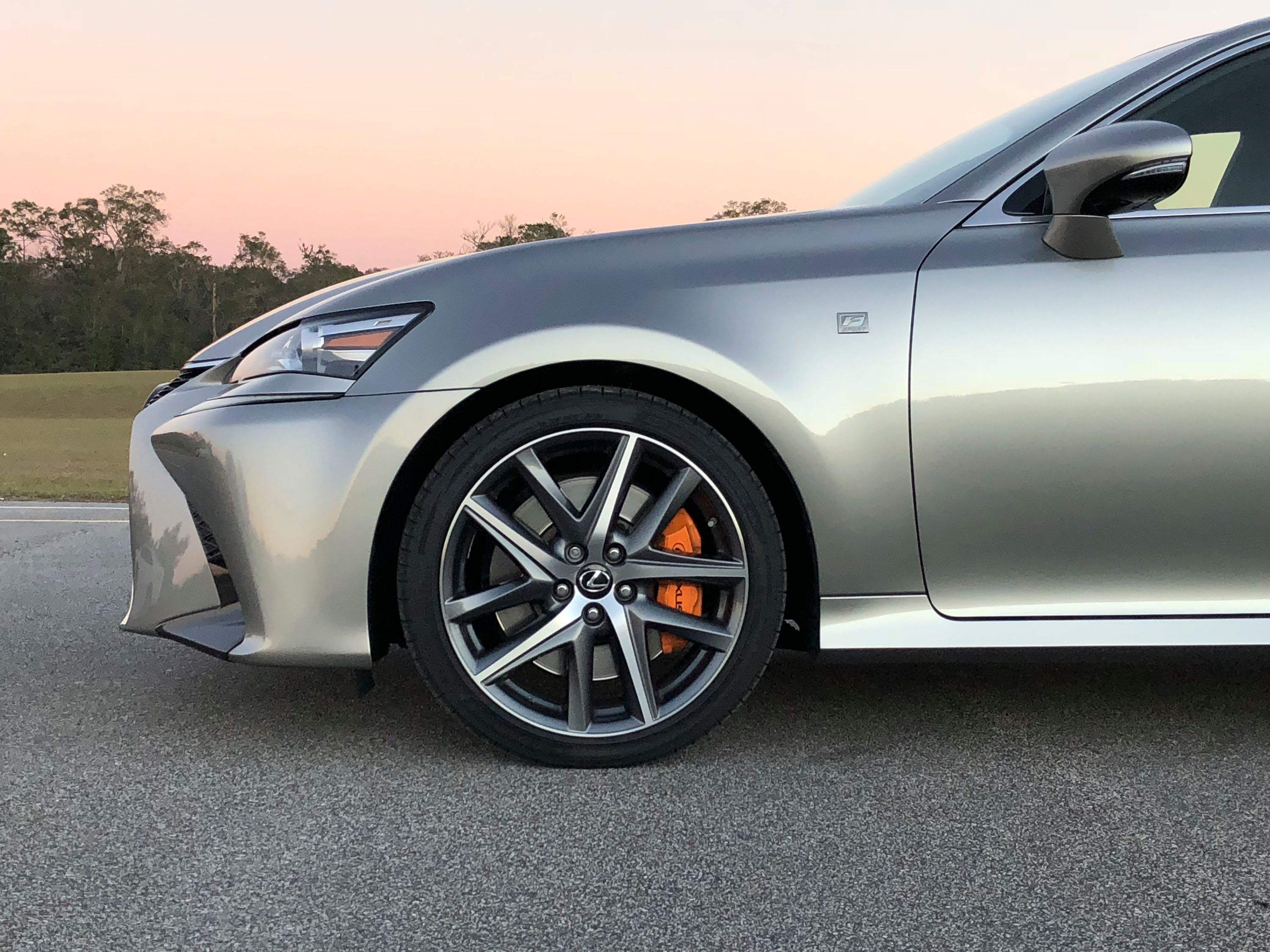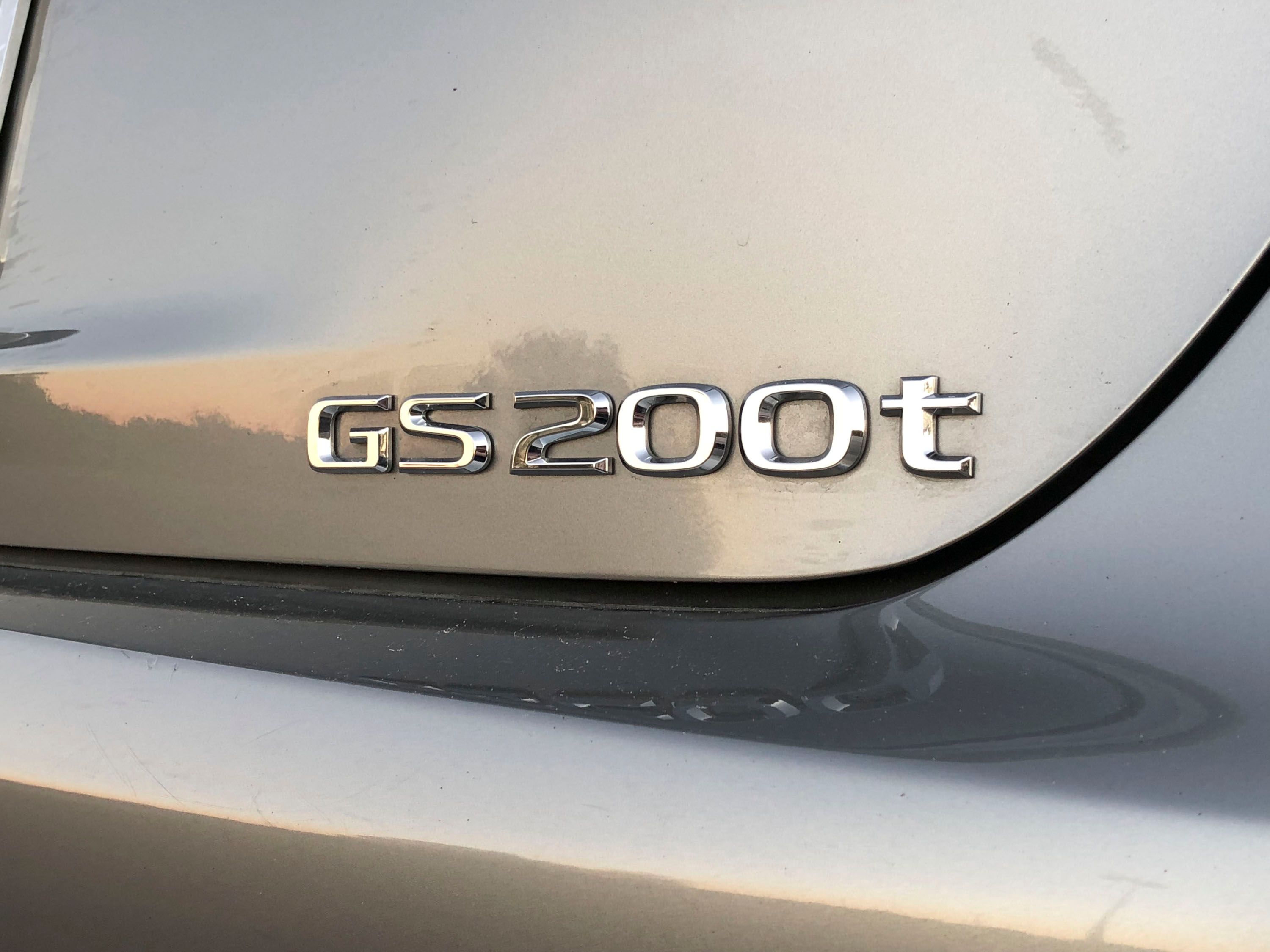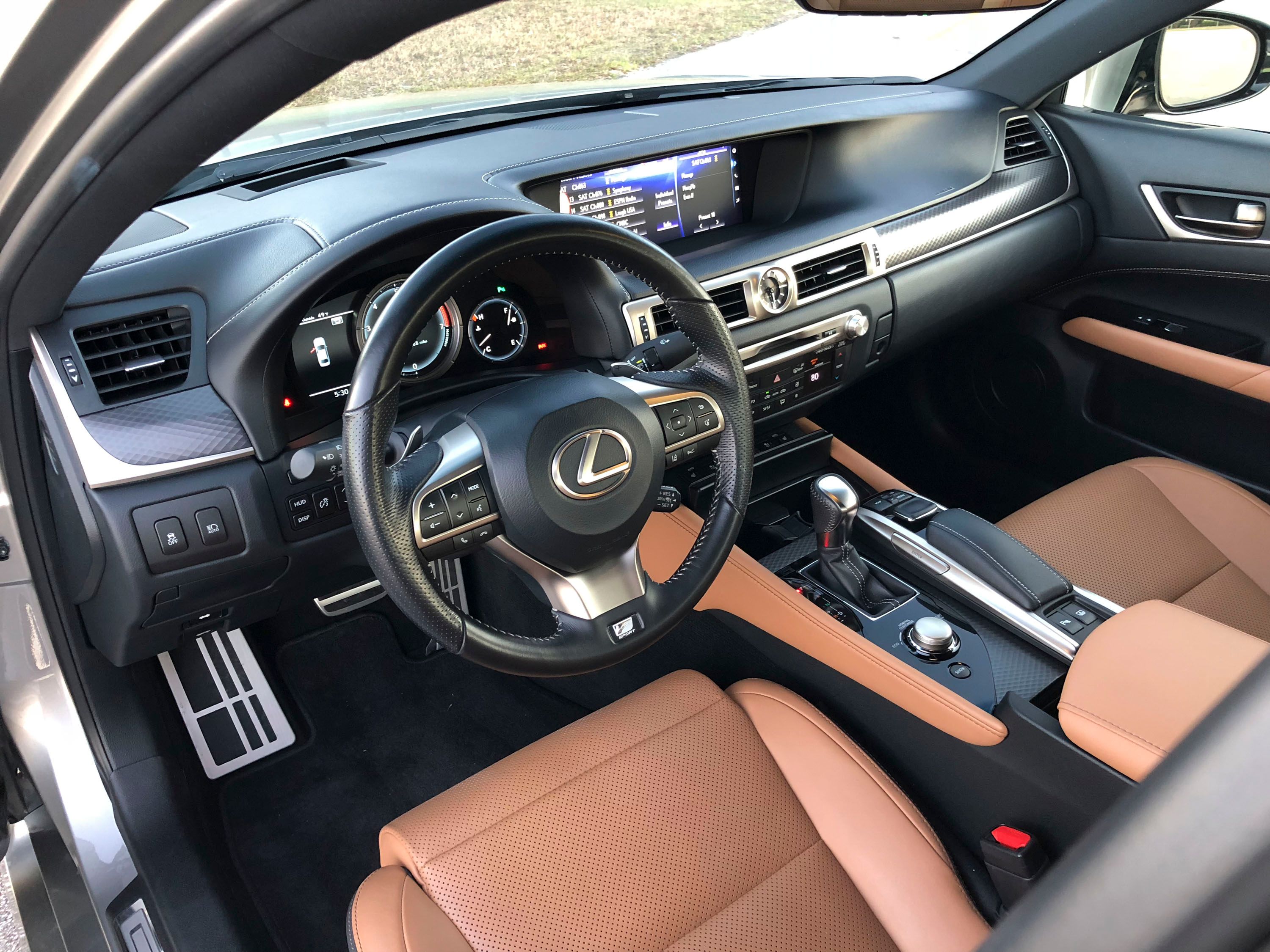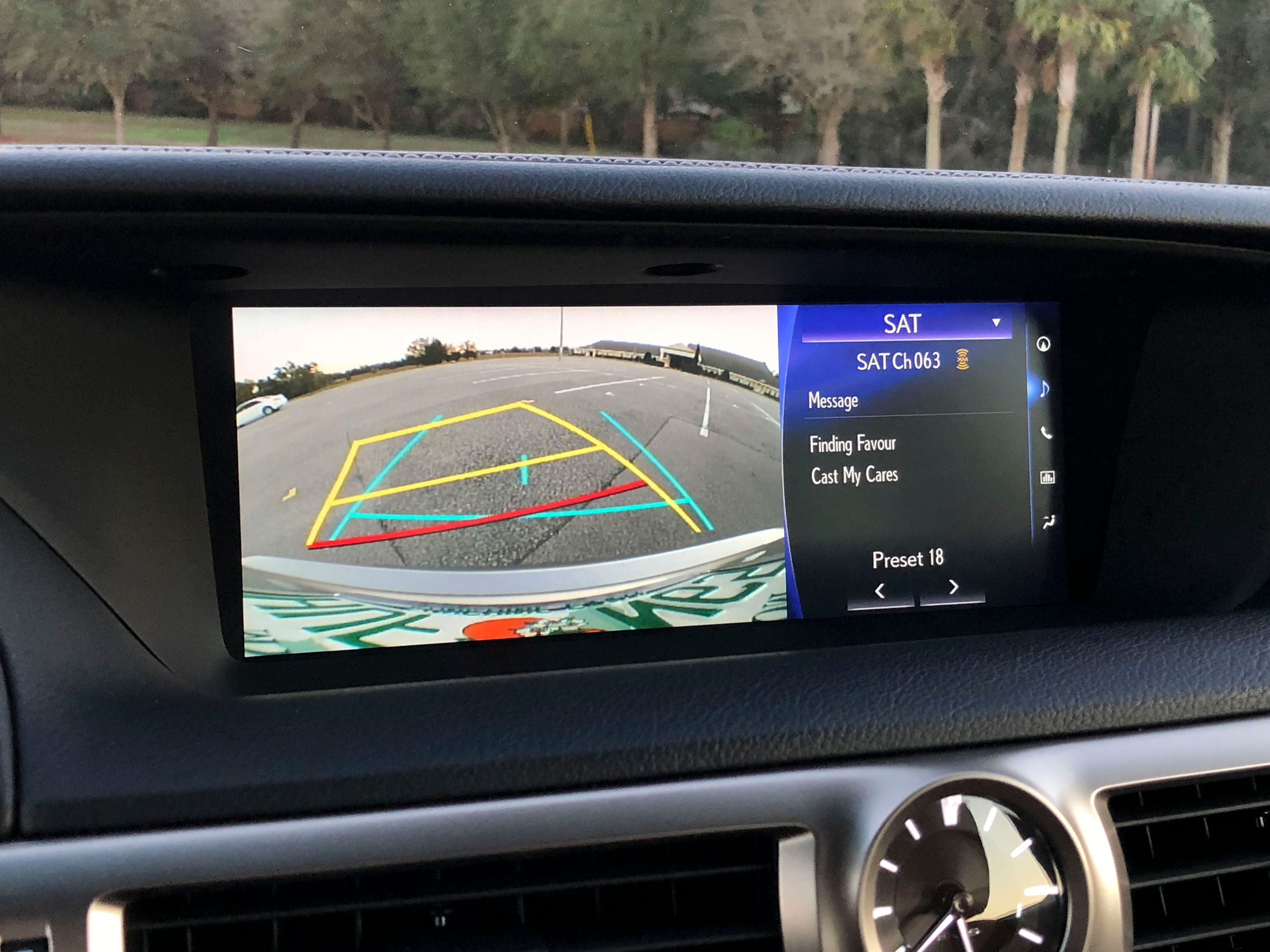Lexus might be best known for its cushy cars and that unforgettable Spindle grille, but the company has a long list of high-performance vehicles that include the iconic LF-A and a handful of F Performance models. The F stands for Fuji Speedway where the vehicles are developed, but it might was well stand for fun. These models have performance-oriented suspensions, larger brakes, a powerful engine, and more aggressive styling. A perfect example of this is the Lexus GS F. It’s a full-size sedan with a 467-horsepower 5.0-liter V-8, rear-wheel drive, massive Brembo brakes, and looks to kill.
At the opposite end of the spectrum is the Lexus GS 200t – the same sedan but powered by a 241-horsepower turbo-four. While the cars couldn’t be more different, Lexus offers something in the middle: the F Sport package. This adds 19-inch wheels, larger brakes with high-friction pads, an adaptive suspension system, variable ratio steering, and a body kit that closely resembles the GS F’s.
This week happens to have a 2017 Lexus GS 200t F Sport in my driveway, and I wanted to explore the differences between it and the all-out GS F, especially haven driven both.
Continue reading for the quick comparison.
Exterior
|
|
ids=755921,681138 |
no_overlay=true> |
It might take a Lexus expert to spot the differences between the GS F Sport and the GS F when seen separately, but when put together, the differences become noticeable. Up front, the GS F has larger air intakes below the headlights. The Spindle grilles are actually pretty similar, though the GS F uses some carbon fiber trim along the bottom.
Around the sides, the front fenders have a massive vent slotted right behind the front wheels. This functional piece helps evacuate air from within the wheel well, put there by the brake ducts designed to keep the big Brembos cool. A more pronounced rocker panel skirt follows the vented fender, giving the GS F a more planted look.
|
|
ids=755925,681134 |
no_overlay=true> |
Around back, the GS F uses stacked, quad exhaust pipes and a carbon fiber deck lid spoiler to denote its high-performance nature. A smaller details are the gray mirror caps that stand apart from the seven available body colors – well, except for Smoky Granite Mica color.
The most noticeable different, however, are the wheels. The GS F comes with 19-inch, 10-spoke wheels, while the GS F Sport comes with 19-inch five-spoke wheels with thicker, less intricate spokes.
As for things the GS F Sport doesn’t have, well, its basically the opposite the GS F. It has smaller openings below the headlights, standard GS front fenders, less pronounced rocker panels, body-colored side mirrors, a body-colored decklid spoiler, and integrated oval dual exhaust tips.
Interior
|
|
ids=755908,681159 |
no_overlay=true> |
Like the exterior, the GS 200t F Sport and GS F share the same basic interior layout. The differences are in the details. The GS F comes with carbon fiber trim; suede inserts on the center console, dash and door panels; and deep bucket seats with uniquely stitched leather. The GS F also boasts a gauge cluster much like the LF-A supercar. It has a small speedometer on the right, a large tachometer in the center, and an information screen on the left. The standard GS and GS F Sport’s gauges look similar, but replace the speedometer for fuel level and coolant temperature, which in all honesty, is a much better use of space. Both cars have digital speed readouts inside the tach and a head-up display with a digital speedometer is optional.
As for the GS 200t F Sport, it comes with comfort-oriented seats, aluminum-style trim, and leather covering all the spots where suede would be on the GS F. And beyond the gauge cluster, the rest of the interior is basically identical, including the large, 12.3-inch infotainment system and odd joystick controller.
Drivetrain
Of course, the biggest differences between the GS 200t F Sport and GS F are the drivetrains. The GS 200t comes with a 2.0-liter turbocharged four-cylinder making 241 horsepower at 5,800 rpm and 258 pound-feet of torque at only 1,650 rpm. Conversely, the GS F comes with Lexus’ familiar 5.0-liter making substantially more power at 467 horses at 7,100 rpm and 389 pound-feet of torque at 4,800 rpm. And though the GS F trails its super sedan competition like the Cadillac CTS-V and BMW M5, its naturally aspirated engine loves to rev and sounds good doing it.
Both the GS 200t and GS F use an eight-speed automatic transmission and pump power to the rear wheels.
As for performance the GS F sprints to 60 mph in only 4.4 seconds and through the quarter-mile in 12.9 seconds at 113 mph and onto a top speed of 168 mph. The GS 200t F Sport needs 6.6 seconds to hit 60 mph and 14.9 seconds to complete the quarter-mile at 95 mph. Its top speed is governed at 143 mph.
Last but not least, the GS F uses a sophisticated electronic rear differential with torque vectoring to help in cornering. The GS 200t F Sport gets an open differential, though by graduating to the GS 350 F Sport opens up the optional Torsen limited-slip differential ($500) and the Dynamic Handling System with rear-wheel steering ($1,700). The GS F isn’t even available with the rear-wheel steering.
Suspension and Brakes
The GS F is clearly designed to handle track time and high-speed cruising. It rides on “F-Adaptive Variable Suspension” that’s tuned for a sharper ride and better cornering. It uses forged aluminum control arms and steering knuckles up front and massive, six-piston Brembo brakes clamping 14.9-inch slotted and vented rotors. Out back, four-piston Bembos clamp on 13.5-inch slotted and vented rotors. The GS F also rides on wider, sticker summer performance tires measuring 255/35R19 up front and 275/35R19 in back.
The GS 200t F Sport might not be that quick in a straight line, but its F Sport package does wonders for its handling prowess compared to the standard GS sedan. Of course, it can’t match the GS F’s road-holding abilities. The GS 200t F Sport uses a similar Adaptive Variable Suspension system that get the “F Sport tune” rather than the “F tune.” Lexus doesn’t dive into the specific calibration differences. The GS 200t F Sport uses 14.0-inch, two-piece brake rotors up front with four-piston calipers. The rear brakes measure 12.2 inches in diameter and come with single-piston sliding calipers. The F Sport still comes with summer performance tires, but they are narrower at 235/40R19 in front and 265/35R19 in back. Both cars share the same electronic power steering system with 2.8 turns to lock.
According to Car & Driver, the GS F manages an impressive 0.93 g on their 300-foot road-holding skidpad, while the GS 200t F Sport manages a slightly milder 0.86 g in the same test. Interestingly, there is a big difference in curb weights between the two cars, as well. The GS 200t F Sport C&D tested weighted 3,869 pounds while the GS F weighted a porky 4,128 pounds. Lexus claims the GS F only weights 4,034 pounds.
Pricing
While the 2017 GS 200t starts at $46,310, adding the F Sport package pushes the price to $53,980. The GS F, on the other hand, starts at $84,350 – a full $30,370 more expensive than the GS 200t F Sport. That’s a hefty jump, though it’s undeniable the vastness of the performance jump between the cars, too.
For someone who wants a serious sports sedan but isn’t keen on Audi, BMW, Cadillac, Mercedes-Benz or Porsche, the Lexus GS F proves to a solid choice. For those who would rather carve corners than drag race or do long drifts around some bendy autocross circuit, the GS 200t F Sport is the better choice. For those in the middle, Lexus has the GS 350 F Sport with its 3.5-liter V-6 making 311 horsepower and 280 pound-feet of torque. For those wanting to be green, Lexus also has an F Sport package for the GS 450h and its hybrid drivetrain.
Behind the Wheel
|
|
ids=755901,681157 |
no_overlay=true> |
So far, we’ve covered all the objective facts between the two GS models. Now it’s time for sliding behind the wheel and getting a feel for them.
Both cars feel incredibly similar thanks to the shared dashboard design, infotainment system, and related gauge clusters. Even the steering system are the same, offering the same number of turns from lock to lock and connected feel doing down the road. There is zero on-center vagueness and both cars start dancing at the slightest turn of their leather-wrapped wheels.
The first big noticeable difference is the seats. The GS F has thickly bolstered front bucket seats while the GS 200t F Sport has cushier padding and less contrast stitching. Once moving the power level quickly becomes apparent. The GS F will rocket away, accelerating very rapidly to extra-legal speeds. The 241-horsepower GS 200t takes a bit more time. Between the somewhat slow-shifting transmission and slight turbo lag, the GS 200t takes few milliseconds to get moving, even with the throttle jabbed quickly to the floor. The naturally aspirated, 487-horsepower GS F doesn’t have that problem.
The differences in braking and road-holding are nominal on the street and would need a racetrack in order to illuminate the GS F’s advantages. Just tooling around the streets will never explore the GS 200t F Sport’s brakes full capabilities, let alone the GS F’s big Brembos.
Stay tuned to TopSpeed.com for more on the 2017 GS 200t F Sport and check below for our previous coverage.
References
Lexus GS
Read our full review on the 2017 Lexus GS.
Read our full review on the 2017 Lexus GS F.
Read our full driven review on the 2016 Lexus GS F.
Why is Lexus Charging $1,400 for Heated Seats on a $47k Car?






